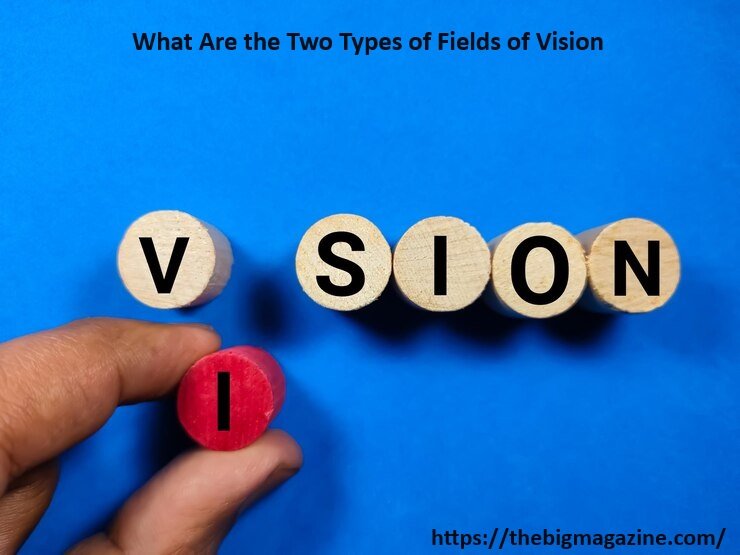Understanding the What Are the Two Types of Fields of Vision is crucial for comprehending how we perceive the world around us. Vision is an intricate process, involving various components of the eye and brain. The fields of vision play a significant role in this process, and they can be broadly classified into central vision and peripheral vision. In this article, we will delve into the intricacies of the What Are the Two Types of Fields of Vision, their functions, and their importance in our daily lives.
Central Vision
Definition and Function
Central vision is the part of our visual field that allows us to see objects directly in front of us with high acuity. This area is responsible for detailed activities such as reading, driving, and recognizing faces. Central vision is facilitated by the macula, a small central area of the retina that contains a high concentration of photoreceptor cells known as cones. These cones are sensitive to fine detail and color, making central vision essential for activities requiring precision, What Are the Two Types of Fields of Vision? The monocular visual field consists of central vision, which includes the inner 30 degrees of vision and central fixation, and the peripheral visual field,
Importance in Daily Life
Central vision is vital for:
- Reading and Writing: It allows us to focus on small print and intricate details.
- Driving: Essential for recognizing road signs, signals, and other vehicles.
- Facial Recognition: Helps identify people and understand their emotions.
- Performing Detailed Tasks: Necessary for activities like sewing, drawing, and using digital devices.
Health and Maintenance
Maintaining central vision is crucial for overall visual health. Conditions like macular degeneration and diabetic retinopathy can severely affect central vision. Regular eye check-ups, a balanced diet rich in vitamins A, C, and E, and protecting eyes from excessive screen time and UV light are essential for preserving central vision.
Peripheral Vision
Definition and Function
Peripheral vision refers to the ability to see objects outside of our direct line of sight. It encompasses the areas of vision that lie on the edges of the visual field. Peripheral vision is primarily mediated by rod cells located in the retina. These cells are highly sensitive to motion and low light conditions, but they do not perceive fine detail or color.
Importance in Daily Life
Peripheral vision is essential for:
- Detecting Motion: Helps in noticing movements and changes in the environment, crucial for activities like sports and driving.
- Navigating Spaces: Assists in moving around safely by providing spatial awareness.
- Night Vision: Rod cells in peripheral vision are more sensitive to dim light, aiding in seeing in low-light conditions.
- Preventing Accidents: Alerts us to potential hazards that are not in our direct line of sight.
Health and Maintenance
Peripheral vision can be affected by conditions such as glaucoma, retinitis pigmentosa, and stroke. Regular eye examinations, managing underlying health conditions, and protective measures such as wearing sunglasses can help maintain healthy peripheral vision.
Comparing Central and Peripheral Vision
Visual Acuity and Detail
Central Vision:
- High acuity and detailed vision.
- Responsible for tasks requiring fine detail and color perception.
Peripheral Vision:
- Lower acuity primarily detects motion and broad shapes.
- Important for spatial awareness and detecting movement.
Color Perception
Central Vision:
- A high concentration of cones allows for detailed color perception.
Peripheral Vision:
- Rod cells do not detect color, leading to limited color perception.
Sensitivity to Light
Central Vision:
- Less sensitive to low light, more effective in bright conditions.
Peripheral Vision:
- Highly sensitive to low light, aiding in night vision.
Common Conditions Affecting Fields of Vision
Macular Degeneration
Affects central vision, leading to difficulty in seeing fine details.
Glaucoma
Impacts peripheral vision, causing a gradual loss of vision from the edges inward.
Diabetic Retinopathy
Can affect both central and peripheral vision, resulting from damage to blood vessels in the retina.
Retinitis Pigmentosa
Primarily affects peripheral vision, leading to tunnel vision over time.
Enhancing and Protecting Fields of Vision
Healthy Diet
A diet rich in antioxidants, vitamins A, C, and E, omega-3 fatty acids, and zinc can support eye health. Foods like carrots, spinach, fish, and nuts are beneficial.
Regular Eye Exams
Regular check-ups with an ophthalmologist can detect early signs of vision problems. Early intervention can prevent or slow down the progression of eye diseases What Are the Two Types of Fields of Vision?
Protective Eyewear
Wearing sunglasses that block UV rays and protective eyewear during activities that pose a risk to the eyes can prevent damage to the eyes and preserve vision.
Healthy Lifestyle Choices
Avoiding smoking, managing chronic health conditions like diabetes and hypertension, and engaging in regular physical activity can contribute to maintaining healthy vision What Are the Two Types of Fields of Vision?

Conclusion
Understanding What Are the Two Types of Fields of Vision—central and peripheral—is fundamental for appreciating how our eyes work together to create a complete picture of our surroundings. Both types play distinct but complementary roles in our daily lives, from performing detailed tasks to navigating our environment safely. By taking proactive steps to maintain our vision health, we can ensure that both our central and peripheral vision remains sharp and functional for years to come, What Are the Two Types of Fields of Vision? Question: What Are the Two Types of Fields of Vision? As: used by the human eye? Peripheral & Cental Central & Perpendicular Peripheral & Frontal
FAQs: What Are the Two Types of Fields of Vision?
1. What are the two types of fields of vision?
The two types of fields of vision are central vision and peripheral vision.
2. What is central vision?
Central vision refers to the area of vision directly in front of you. It is responsible for sharp, detailed, and color vision, allowing you to focus on tasks like reading, driving, and recognizing faces.
3. What is peripheral vision?
Peripheral vision, also known as side vision, encompasses the outer edges of your visual field. It detects motion and provides a broad overview of your surroundings, helping you navigate and remain aware of potential hazards.
4. How do central and peripheral vision work together?
Central and peripheral vision work together to provide a complete visual experience. Central vision focuses on details and color in a narrow field, while peripheral vision provides context and detects movement, creating a comprehensive understanding of the environment.
5. What role does central vision play in everyday activities?
Central vision is crucial for activities requiring detailed focus, such as reading, writing, driving, watching television, and recognizing faces. It allows for precise tasks and interactions What Are the Two Types of Fields of Vision?
Related Post: Cranial Technologies.
